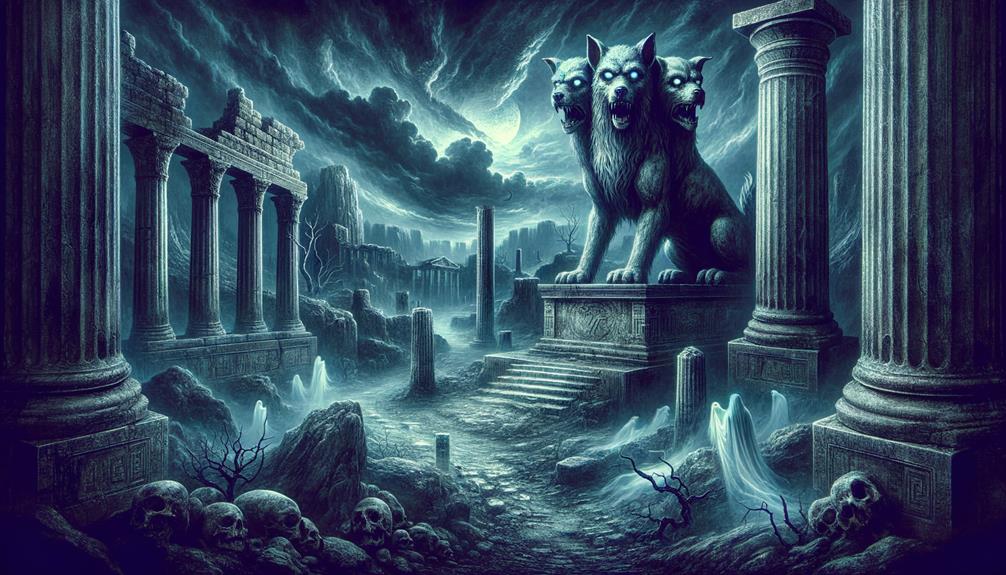In the realm of classic Greek myths, Cerberus stands out as a beast of note. This multi-headed dog, a terrifying offspring of Typhon and Echidna, was assigned the task of guarding the doors to Hades. While some historic accounts, like the one by Hesiod, suggest Cerberus had up to fifty heads, art from that era typically depicts him with three. Cerberus not only features prominently in age-old stories, but its legend also serves as a pivotal point in Hercules’s Twelfth Labor. This task put Hercules’s strength to the ultimate test as he was tasked with capturing the beast.
The role of Cerberus wasn’t just as a fearsome guard; its imagery also provides us valuable insight into how our forefathers may have perceived the concept of death. The influence of Cerberus’s legend remains potent even today, sparking vivid representations in various modern media platforms. Digging deeper into the Cerberus myth uncovers its intricate symbolism and representation.
Origin and Etymology of Cerberus
Let’s chat about the backstory and roots of Cerberus. This terrifying beast springs from the loins of Typhon and Echidna, two monstrous figures in Greek mythology, as told by the ancient Greek poet, Hesiod. Cerberus, a living sign of the barrier between life and death, is famous in Greek folklore as the guard dog of Hades, the realm of the dead. Though Hesiod described Cerberus as having fifty heads, most ancient art shows him as a three-headed dog, complete with a snake tail and a mane made of serpents. This image, while it may give you the chills, underscores Cerberus’ key role in keeping the underworld secure. It also puts a spotlight on the creature’s strength and ability to instill fear, traits he likely got from his scary parents, Echidna and Typhon.
Descriptions in Ancient Texts
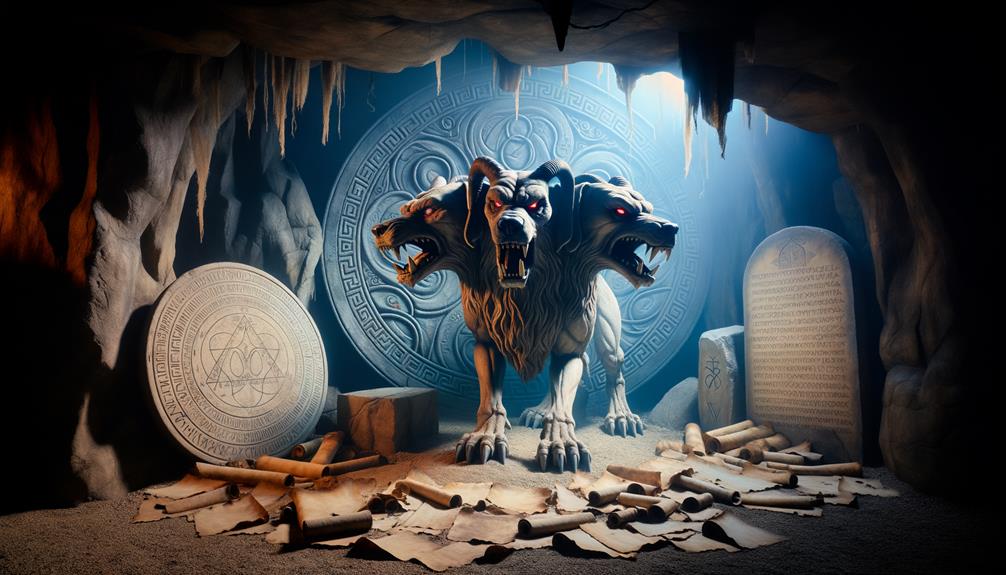
When you delve into ancient literature, you can’t miss Hesiod’s description of Cerberus. This Greek author paints a wild picture of a dog with fifty heads, a far cry from later images of the same creature. According to Hesiod, Cerberus, a terrifying beast, was born from Typhon and Echidna, two powerful characters in Greek mythology. However, the later artwork shows a different Cerberus, one with three heads, a tail like a snake, and a mane made of serpents.
Here’s where Cerberus really shines in these old stories – he’s usually guarding Hades’ entrance, acting as a gatekeeper between the world of the living and the dead. This responsibility underlines his significance in ancient Greek mythology and in the mythologies of cultures that took inspiration from it.
Cerberus in Herculess Twelve Labours
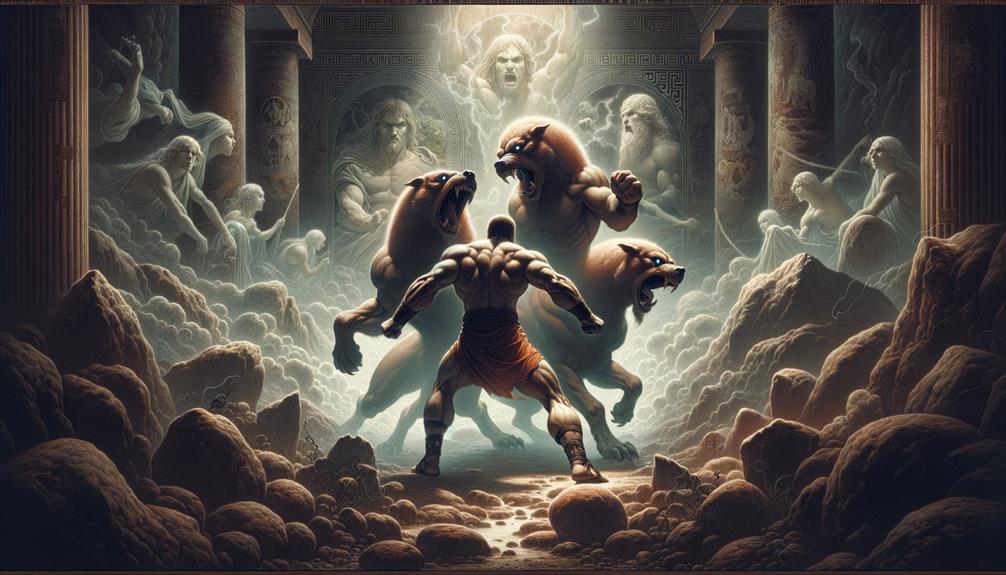
As we delve into Heracles’s final and most famous challenge, we come across his daunting task of capturing Cerberus, a task set by his cousin Eurystheus to push the limits of Heracles’s bravery and power. This twelfth mission demanded a risky trip down to the underworld. How did Heracles manage this? He got initiated into the Eleusinian Mysteries. But let’s be clear, it wasn’t a one-man show. He had a little help from his friends, the gods Hermes and Athena, who played key roles in this bold journey into the underworld. There are several versions of the story that suggest different spots where Heracles emerged from the underworld, Cerberus in tow. This rich, multi-faceted tale is an excellent example of the complex network of relationships, tasks, and tests that constitute the essence of ancient mythology.
Iconography and Artistic Representations
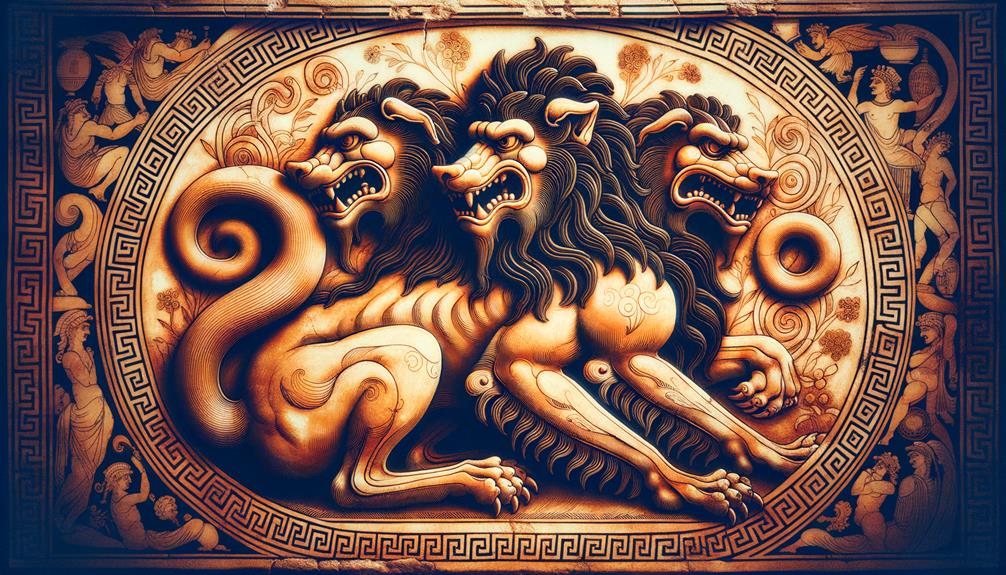
When you delve into the world of ancient Greek art, you can’t help but notice the unforgettable image of Cerberus. Known for its terrifying three heads, snake-like tail, and snarling mane of serpents, this beast symbolizes the divide between life and death. As the faithful canine protector of the underworld, depictions of Cerberus remind us of its vital role in mythology.
The intricate portrayal of its terrifying traits, like the snake-filled mane, stirs up feelings of fear. This chilling impression emphasizes Cerberus’ job of stopping the living from wandering into the land of the departed. In the art of yesteryears, this visual metaphor effectively conveys the unchangeable reality of death.
Cerberus’ iconography doesn’t just add depth to its mythical tale. It also offers insight into how the Greeks viewed life after death. By studying these artistic representations, we can gain a deeper understanding of their beliefs and philosophies surrounding mortality and the concept of the afterlife.
Cerberuss Influence in Modern Culture
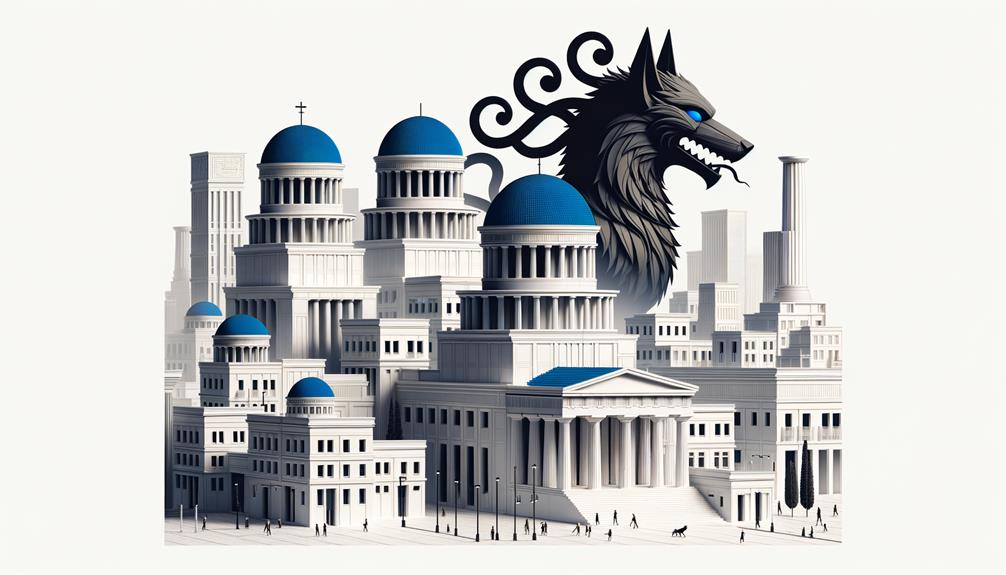
When you look at today’s culture, it’s hard to miss the influence of Cerberus. This intimidating beast from ancient Greek mythology has found its way into all sorts of media, from books and movies to video games. Known as the multi-headed guardian of the underworld, Cerberus is typically portrayed as a scary and commanding figure, stirring up a mix of fear and curiosity. This portrayal often inspires characters in well-known media, adding an enticing touch to the story. Plus, Cerberus’s impact reaches beyond tales to modern art, music, and even style, where its image draws in the audience and stimulates imaginative interpretations. Clearly, Cerberus’s footprint is alive and well in today’s culture, proving its lasting relevance and the ongoing allure of ancient myths.
Frequently Asked Questions
What Is the Famous Myth About Cerberus?
You’ve probably heard of the terrifying Greek myth involving Cerberus, right? This fearsome creature, known as Hades’ pet, had a run-in with a certain braveheart, Heracles. It’s a fascinating story, actually. Heracles was given the job of capturing Cerberus as part of his legendary labors. Now, this wasn’t just a walk in the park – Cerberus was no ordinary pup. He was monstrous, scary, and fiercely loyal to Hades. But did that stop Heracles? Not at all. He managed to catch Cerberus, demonstrating his unbelievable courage. Quite the feat, wouldn’t you agree?
How Old Is the Cerberus Myth?
The Cerberus myth is an age-old tale, with roots stretching back to the time of ancient Greece, a few millennia ago. This tale reflects the vivid storytelling traditions of that era, and you’ll find references to it in works by notable Greek authors like Hesiod and Apollodorus.
Is Cerberus Evil Mythology?
Well, you see, Cerberus in mythology isn’t considered evil. Sure, he might come across as intimidating, but he plays a key role. His job is to stand guard at the entrance to the underworld. And why is that, you ask? Well, he’s there to keep living souls from wandering in and to prevent the departed from sneaking out. This way, the balance of the afterlife remains undisturbed.
Who Is Cerberus in Norse Mythology?
Cerberus isn’t a figure you’ll find in Norse mythology, even though you might think so. Instead, he hails from Greek mythology. Now, if we’re talking about Norse mythology, you would come across some other mythical beings, such as Fenrir and Jormungandr. But Cerberus? Nope, he’s not part of the Norse crowd. Each mythology, you see, has its own unique cast of characters.

